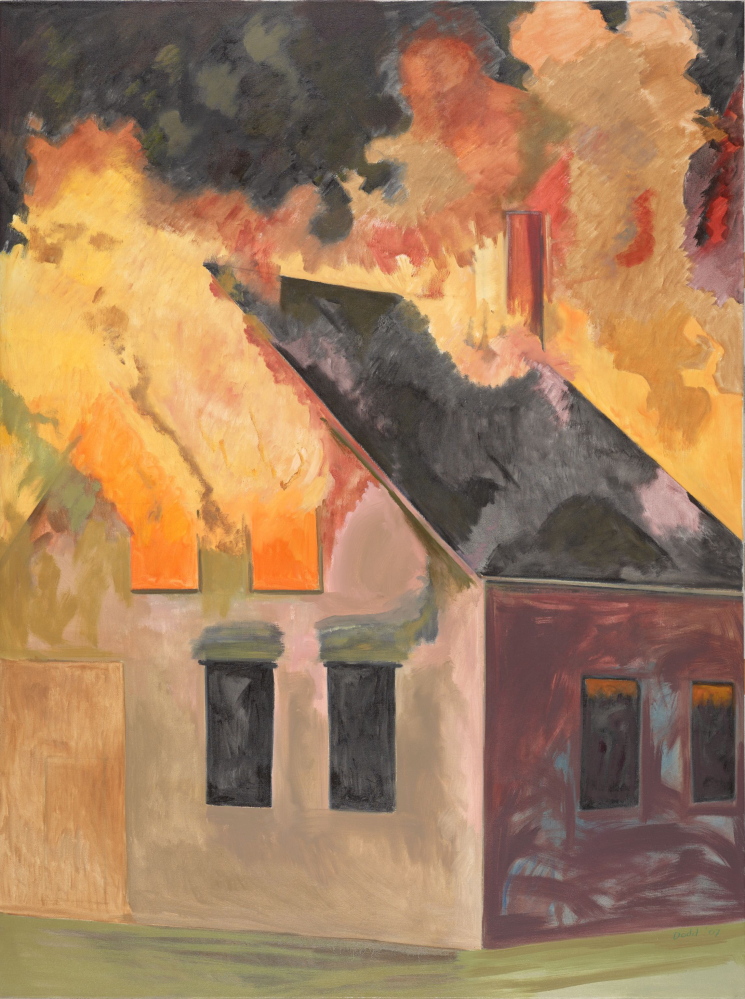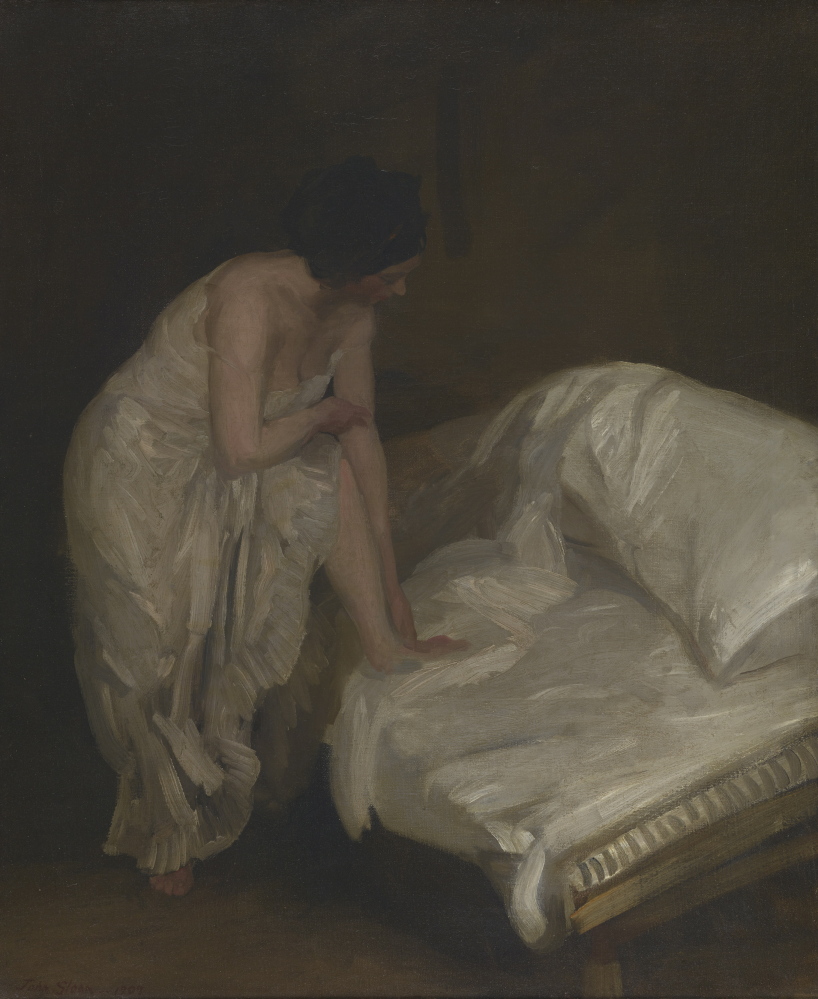In an extraordinary bit of art community symbiosis, Lois Dodd will talk about painting at night in conjunction with the Bowdoin College Museum of Art’s excellent exhibition “Night Vision: Nocturnes in American Art.” Dodd does not have a work in “Night Vision,” but her 2007 painting “Burning House, Night, Vertical” (given to the Colby Museum of Art by the Alex Katz Foundation) occupies the center spot in the Portland Museum of Art’s exhibition “Director’s Cut.” And for good reason.
The bold, clear and exciting painting takes a close-up view of a geometrically simple house engulfed in flames. Since there are no signs of people or crisis, the image is surprisingly free of anxiety. And because the house is pushed right up to the front edge of the stage (the canvas), the scene takes on an appealing theatricality: Our role is not to take action, but to play the part of audience.
Keeping a safe distance from the fire, we find ourselves right where we should be, situated comfortably by the mise-en-scène.
Dodd is all about common-sense visual intelligence. She is never one to fuss or fool about.
But she also doesn’t pretend that reality isn’t a messy thing. A house on fire, after all, is by definition a disaster. Within the destruction, however, Dodd reveals the construction of painting. The darkness is lit by the subject itself, the burning house. Dodd has taken Western painting’s assumption of a scene lit by the sun (or some other outside source) and turned it on its head.
Up close, we can follow Dodd’s process of painting construction as it mirrors the deconstruction of the house. We can see pencil lines she follows and where she changed her mind. We can see how the chimney was moved and how Dodd expanded the space of the door to balance the physical object with immaterial players, such as light, heat, smoke and darkness. We can see her thoughts.
Painting at night shifts from impressionist opticality to the classical presumption of “chiaroscuro,” representation by dividing up light and dark. Working on a dark ground, painters like Rembrandt built the solidity and volume of objects up from darkness through modeling and highlights. Instead of following them literally, however, Dodd opens those doors explosively from the inside.
Freelance writer Daniel Kany is an art historian who lives in Cumberland. He can be contacted at:
dankany@gmail.com
Copy the Story LinkSend questions/comments to the editors.




Success. Please wait for the page to reload. If the page does not reload within 5 seconds, please refresh the page.
Enter your email and password to access comments.
Hi, to comment on stories you must . This profile is in addition to your subscription and website login.
Already have a commenting profile? .
Invalid username/password.
Please check your email to confirm and complete your registration.
Only subscribers are eligible to post comments. Please subscribe or login first for digital access. Here’s why.
Use the form below to reset your password. When you've submitted your account email, we will send an email with a reset code.